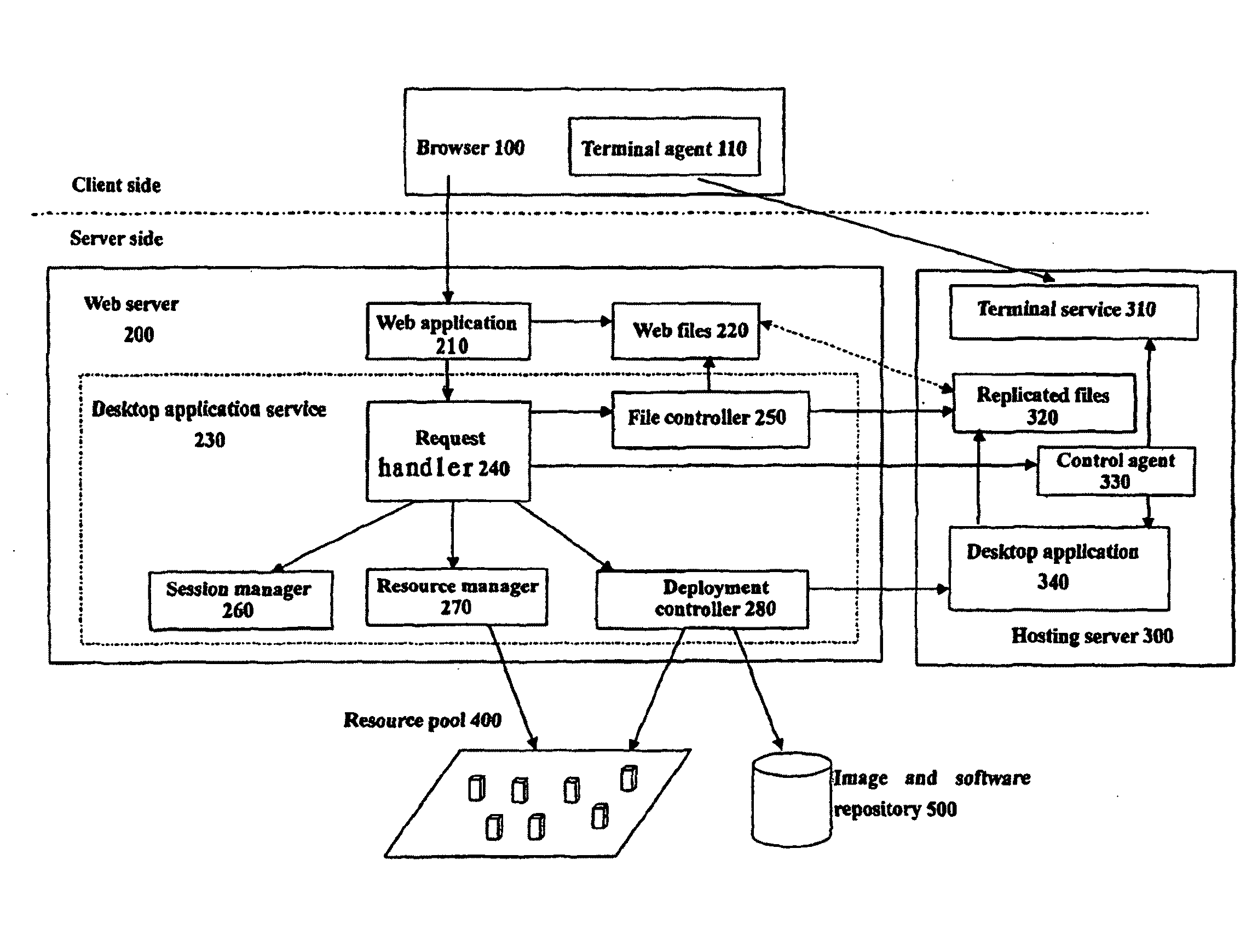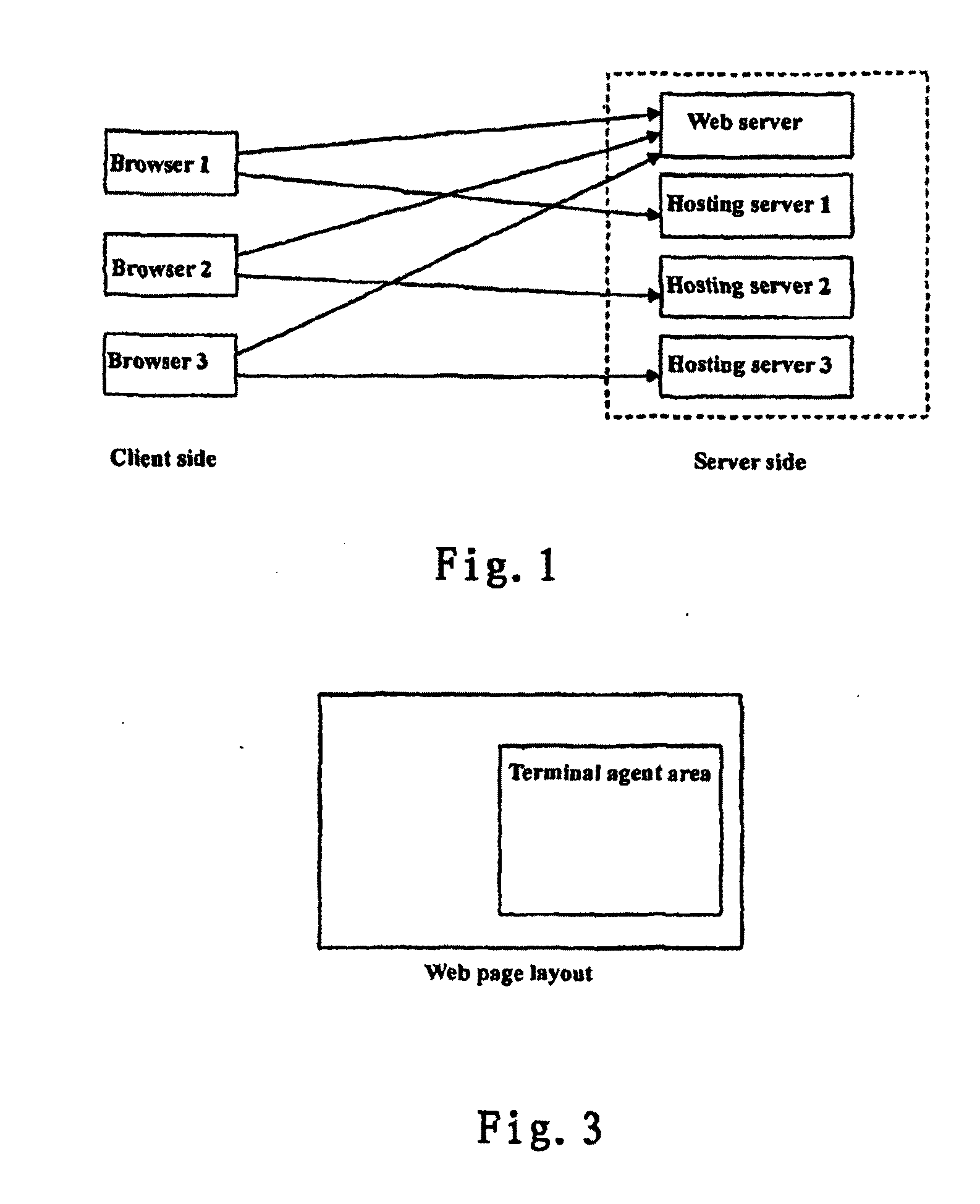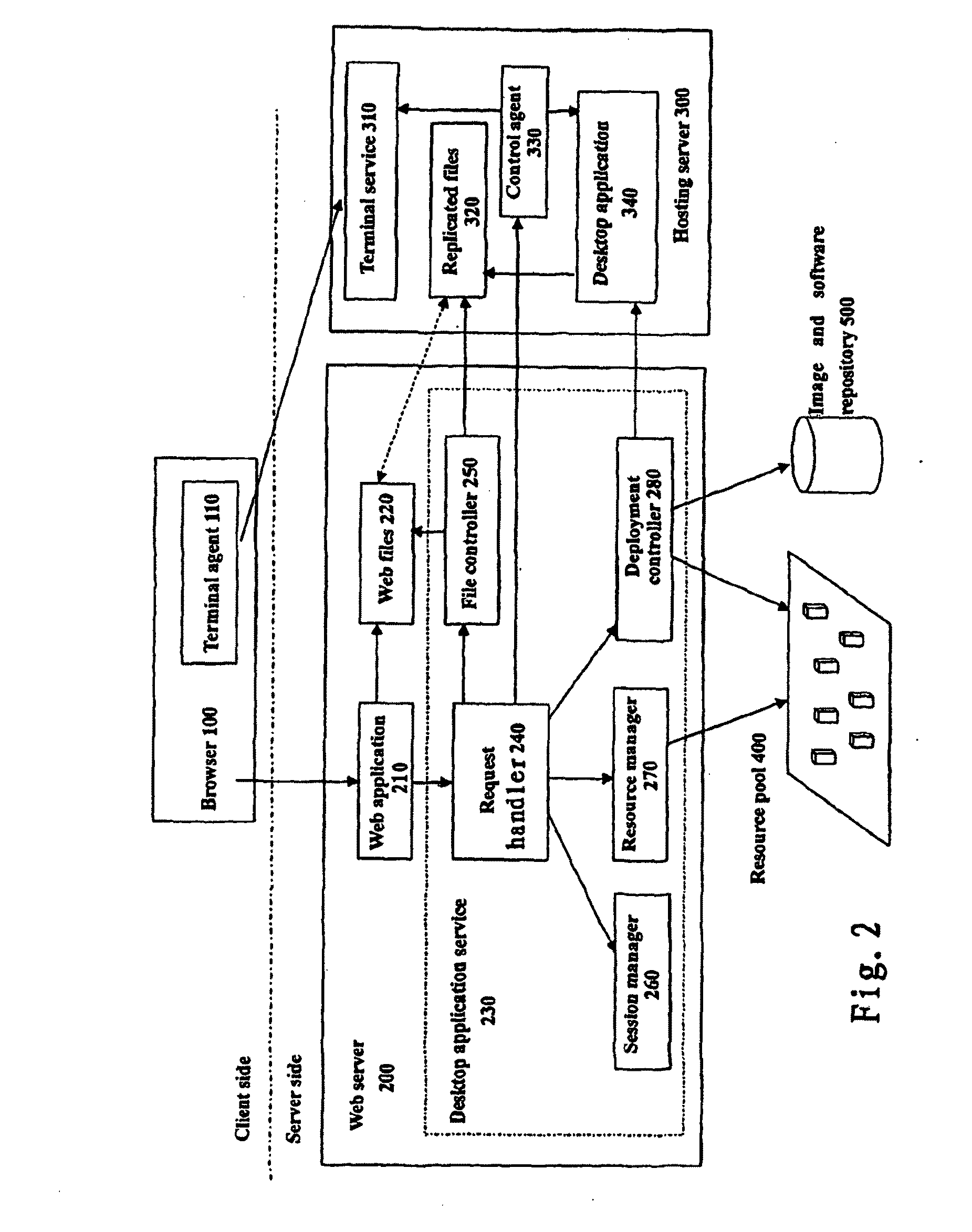[0007]In accordance with another aspect of the present invention there is provided a
Web server that facilitates convergence of a desktop application and a Web application, as well as a corresponding computer
system.
[0014]In those solutions according to the present invention, by embedding a
remote desktop application's
user interface (UI) into a Web application (e.g.,
Web browser), it is possible for an
end user to use the
remote desktop application to process files of the Web application. This means that the user could use the desktop application to edit Web files within a
Web page. When a user at the
client side is using a certain Web application, he may send to a Web server a request for initializing a certain desktop application. After the Web server receives this request, firstly, it finds an existing server which has been installed with the requested desktop application. Such a server that has already installed with or is capable of being installed with the requested desktop application to provide this desktop application is referred to as a hosting server hereinafter. If such a server can't be found, then the Web server will allocate a new hosting server for the user and provide it with the required operation system and the requested desktop application. After the hosting server is ready, the Web server will replicate Web files into the hosting server and start the desktop application with these files. When the desktop application is started, the Web server will return the address of the hosting server (for example,
IP address and port number) to the client. At the same time, a terminal plug-in, which can be acquired from the Web server, is downloaded or launched within the same
Web browser at the
client side. This plug-in immediately connects to the hosting server by using the above terminal addresses and makes the
remote desktop application's user interface to be shown in the
Web browser at the
client side. Then the user could interact with the remote desktop application through the terminal plug-in. In the end, when the user closes the desktop application, those Web files modified and changed during the desktop application interaction will be replicated to the Web server. In this way, Web applications and desktop applications can be converged.
[0015]The present invention has several advantages. The first
advantage is that it provides a unified Web console for end users to access desktop applications and Web applications. Desktop applications could be regarded as a part of Web applications, and they are hardware independent and operation system independent. A Single Sign-On (SSO) feature is ready under the control of Web applications. Moreover, Web files can be shared between desktop applications and Web applications, and all changes made by desktop applications can be quickly reflected on Web applications.
[0016]The second
advantage is that management effort for desktop applications can be simplified. For end users, there is no need to download, install, update and maintain desktop applications at the client side. Moreover, in most cases, some desktop applications may be rarely used by users. With these solutions of the present invention, users do not need to install desktop applications locally. Binary codes of desktop applications are executed on the hosting server, thus it is easier to
control software license issues. For
software vendors, there is no need to rewrite corresponding desktop applications using
Web programming models. Furthermore, traditional desktop applications can be integrated with Web applications, and the development cycle of desktop applications can also be reduced. For system administrators, it is easier to manage these desktop applications and the applications could be maintained centrally. On the other hand, all files and data can be stored at the Web server, thus
data loss risk is reduced to minimal and data
backup is also easier. In the mean time, more powerful resource (e.g., hosting server) could be used to provide better performance for users.
[0017]The third
advantage is that
virtualization and
automation technology can be utilized to reduce cost in those solutions according to the present invention. Several existing technologies, such as VMWare, Xen, and IBM LPAR etc., support server
virtualization. These technologies could simulate a physical server as several logical servers or
virtual servers. These
virtual servers may share resource of the same physical server, which could improve
resource utilization and sharing. Furthermore, desktop applications could be deployed on these
virtual servers, thereby saving hosting cost for service providers. On the other hand,
automation technology may be used to provision operation systems (OSs) and desktop applications, thereby facilitating to save
deployment time and reduce
human error.
 Login to View More
Login to View More  Login to View More
Login to View More 


